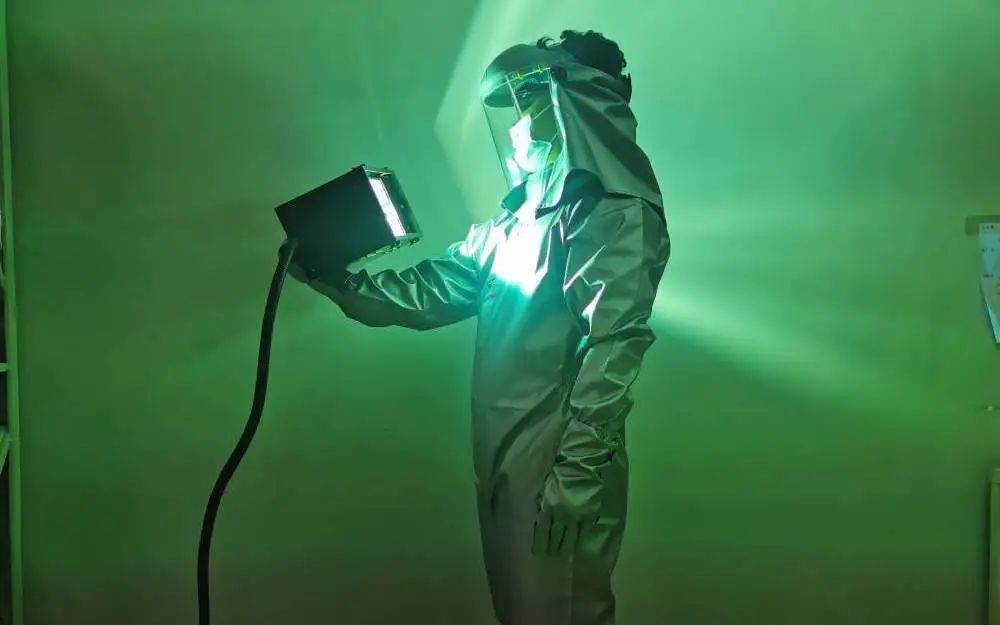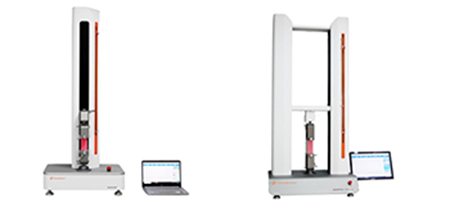Coated fabric: It is a kind of fabric treated by special technology. It can…
Classification and Application of Smart Fabric Textiles
Table of Contents
- Brief Introduction of Smart Fabric
- Basic definition of smart fabric textiles
- The main types of smart fabric textiles and their applications
- The development trend of smart fabric textiles
- Conclusion
Brief Introduction of Smart Fabric
You are most likely to hear the words of smart fabric, what is exactly smart fabric? Short answer is: It covers high-quality and high-performance fiber manufacturing, high-end textile smart manufacturing, and the fashion industry represented by clothing and apparel brands. Product applications also extend from the field of life clothing to medical and health, ecology and environmental protection, military and aerospace fields.
Many countries have also introduced development strategies in the textile field, refocusing the national economic development on the textile field. For example, the United States proposed the “Smart Textile Plan” and established the “Revolutionary Fiber and Fabric Manufacturing Research Center”; Germany formulated The “Future Textile” national strategy, and the formation of the “German Future Textile Alliance”. The key word “smart textile” in the textile industry development plan issued by the Ministry of Industry and Information Technology of China has also appeared many times, proposing to strengthen the integration of electronic technology, information technology and textile technology to develop smart textile products. It can be seen that the development prospects of smart fabric textiles are unlimited, and smart fabric textiles will become the key development direction and important economic growth point of the textile and apparel industry in the future.
This article starts with the basic concepts of smart fabric textiles, summarizes the main types of smart fabric textiles and their applications, briefly predicts the development trend of smart fabric textiles, and aims to provide useful information for practitioners in the development and manufacturing of smart fabric textiles.
Basic definition of smart fabric textiles
Smart Materials
The concept of “smart materials” was first proposed by Professor Toshiyoshi Takagi of Japan. He put forward this concept in 1989 by integrating the content of information science with the structure and function of materials. Smart material means that the material itself can perceive external stimuli, and according to the changes of external conditions, make corresponding responses and perform corresponding actions. Generally speaking, smart materials are new functional materials with seven functions: sensing function, feedback function, information recognition and accumulation function, response function, self-diagnosis ability, self-repair ability and adaptive ability.
Smart textile materials
Smart textile materials mean that in addition to the appearance style and wearability of ordinary textile materials, the materials can also sense changes in the external environment, and make feedback by changing one or more of their performance parameters, so as to respond to the external environment and adjust themselves to achieve A new type of textile material adapted to the environment.
Smart textile
smart fabric textiles refer to fabric textiles obtained through spinning, weaving and other processes using smart textile fibers as raw materials, or smart fabric textiles obtained by combining other smart materials with fabric textiles. The smart textile itself is a system that includes a sensing unit, a feedback unit and a response (execution) unit. Compared with smart fibers, it is easier to achieve the purpose of “intelligence” by integrating sensing elements, feedback elements and response elements.
Classification of smart fabric textiles
At present, smart fabric textiles are divided into passive (passive) smart fabric textiles, active (active) smart fabric textiles and advanced smart fabric textiles.
Passive smart fabric textiles
Passive smart fabric textiles can only perceive changes or stimuli in the external environment, but cannot adjust themselves according to external changes. They are the first generation of smart fabric textiles. Such as anti-ultraviolet clothing, antibacterial fabric textiles, ceramic coated fabric textiles, and light guide fabrics are all passive smart fabric textiles. In fact, passive smart fabric textiles still fall short of the scope of smart fabric textiles in the strict sense, and should be more accurately called functional fabric textiles.
Active smart fabric textiles
Active smart fabric textiles can not only perceive changes or stimuli in the external environment, but also respond accordingly to changes in the outside world. It is the second generation of smart fabric textiles. For example, shape memory fabric textiles, waterproof and moisture-permeable fabric textiles, phase-change heat storage clothing, and light-thermochromic fabric textiles are all active smart fabric textiles.
Advanced smart fabric textiles
Advanced smart fabric textiles, also known as super smart fabric textiles and adaptive smart fabric textiles, are the third generation of smart fabric textiles, involving communication, sensing, artificial intelligence, biology and other high-tech disciplines. It can perceive changes or stimuli in the external environment, and respond accordingly, adapting to the external environment through self-regulation. At present, advanced smart fabric textiles are still in their infancy and await further research.
The main types of smart fabric textiles and their applications
Smart color-changing fabric textiles
Definition and classification of smart color-changing fabric textiles
Smart color-changing fabric textiles refer to fabric textiles whose color changes with changes in external stimuli (such as light, electricity, pressure, temperature, etc.). This type of smart fabric textiles mainly include photochromic fabric textiles, thermochromic fabric textiles, electrochromic fabric textiles, piezochromic fabric textiles, and wet-chromic fabric textiles.
Photochromic fabric textiles are the discoloration effect of the transformation of substance A into its isomer substance B under the action of different light waves. The two substances A and B have different absorption spectra and energy level structures. Remove the light source or change to another Light source, B is converted to A, and the color returns to the original color; Thermochromic fabric textiles are due to the pigment molecular structure on the fabric can change with temperature, which causes color changes; Electrochromic fabric textiles refer to the optical properties of materials (reflective Rate, absorptivity, light transmittance, etc.) produce stable and reversible color changes under the action of an external electric field; pressure-sensitive color-changing fabric textiles sense the color change of the pressurized part of the fabric through a matrix formed by the interweaving of conductive fibers.
Application of smart color-changing fabric textiles
Smart color-changing fabric textiles have better wearability and can be used in civilian, military, and high-risk industries. In the military field, it can be used for military camouflage, such as controllable color-changing camouflage clothing; in the medical field, it can be used for medical monitoring, such as baby clothing, to monitor whether the baby has a fever through clothing color changes; special occupational safety protection, such as long-term exposure to chemicals In the environment of hazards or strong radiation, the color of clothes will change; the digital field, such as electrochromic clothing, can realize the function of a TV screen on the clothing; the fashion field, such as photochromic umbrellas, photochromic T-shirts, etc. The photochromic T-shirt is shown in Figure 1.

Figure 1 Photochromic T-shirt
Intelligent temperature control textile
Definition and classification of intelligent temperature control fabric textiles
Intelligent temperature control fabric textiles can be divided into three categories: thermal insulation fabric textiles, cooling fabric textiles, and automatic temperature control fabric textiles according to their stimulus response to external temperature.
Thermal insulation fabric textiles use sunlight thermal storage fibers or far-infrared fibers to achieve thermal insulation. The solar thermal storage fiber is to radiate the visible light and near-infrared rays from the absorbed sunlight to the human body in the form of heat to achieve the effect of heat preservation; the far-infrared fiber converts the heat emitted by the human body into a certain wavelength range of far infrared rays. Re-radiate to the human body to reduce heat loss by accelerating blood circulation and achieve the effect of heat preservation. Therefore, the heat preservation performance of far-infrared fiber is better.
Cooling fabric textiles mainly include ultraviolet and heat shielding fabrics, cool fabrics, and heat-dissipating fabrics. Ultraviolet and heat shielding fabrics are uniformly mixed with fine ceramic powder that can reflect ultraviolet rays in a polymer solution and then spun into fibers. Its absorption rate of visible light and near infrared is low, which makes the human body feel cool. The temperature in this fabric 2 ~ 4 ℃ lower than conventional cotton fabric; cool fabric is adding metal oxide to polyester fiber, through metal oxide to weaken clothing fading caused by ultraviolet rays and light, make the inside of the clothes cooler, it can reduce 5 ~10 ℃; The heat dissipation fabric is mixed with metal powder coating in the fiber, so that the heat emitted by the human body can be quickly dissipated to the outside world through the metal powder with high thermal conductivity such as Fe, Cu, Al, Zn.
Automatic temperature-regulating fabric textiles can adjust the temperature in both directions. Generally, it is a combination of phase change technology and fiber manufacturing technology. It can absorb and release heat energy according to the rise and fall of the ambient temperature.
Application of intelligent temperature control fabric textiles
Intelligent temperature control fabric textiles can be used for civilian clothing, such as cooling vests, sportswear, ski suits, etc., shown in Figure 2; professional clothing, such as space suits, fire suits, diving suits, etc.; for medical purposes, constant temperature bandages can be made to protect wounds. To prevent local temperature from being too high or too low; In automobile manufacturing, it can be used for seats and roofs inside cars.

Figure 2 Cooling vest
Shape memory fabric textiles
Definition and classification of shape memory fabric textiles
Shape memory fabric textiles refer to fabric textiles that can change the shape, size or internal structure of the fabric after being subjected to external stimuli (such as temperature, humidity, light, magnetic field, pH value), but can return to the original state under specific conditions. Including shape memory alloy fabric textiles, shape memory polymer fabric textiles and shape memory hydrogel fabric textiles.
Shape memory alloy fabric textiles refer to the metal alloys in fabric textiles that can be transformed between a variety of different crystal structures after thermal stimulation, which can cause fabric changes, such as gold-cadmium alloys, nickel-titanium alloys, copper-aluminum-nickel alloys and aluminum-zinc alloys. ; Shape memory polymer fabric textiles are polymers formed by implanting a movable matrix through permanent physical or chemical crosslinking methods, the matrix can store mechanical deformation energy, and the deformation can be restored after the fabric is stimulated by the outside; Shape memory hydrogel fabric textiles achieve shape memory through hydrogels, which can swell in water but are insoluble in water.
Application of shape memory fabric textiles
Shape memory fabric textiles are mainly used in non-iron, impact resistance and other functional fields and aesthetic fields, such as anti-scald clothing. When the clothing is exposed to high temperatures, the fiber changes from a flat surface to a pagoda shape to achieve the effect of protecting the human body; shape memory hydrogels fabric textiles are mostly used in uniforms for marine workers; Check figure 3 for shape memory garments; shape memory fibers are also mostly used in pillows and mattress padding.

Figure 3 Shape memory clothing
Waterproof and breathable fabric textiles
Definition and classification of waterproof and breathable fabric textiles
Waterproof and moisture-permeable fabric textiles are also called “breathable fabrics”, which means that the fabric is not wetted by water under a certain water pressure, making it water repellent. At the same time, the sweat emitted by the human body can be transmitted to the fabric in the form of water vapor. On the outside, it is uncomfortable not to accumulate condensation between the human body surface and the fabric. It mainly includes 4 types of waterproof and moisture-permeable high-density fabrics, microporous membranes, non-porous membranes, and smart types.
The waterproof and moisture-permeable high-density fabric uses the principle of gas molecules diffusing from high concentration to low concentration. When the human body sweats, the sweat can diffuse to the outside through the fabric, and when the fabric is wet, the fibers can swell laterally and the gaps become smaller to achieve waterproof Effect; Microporous membrane waterproof and moisture-permeable fabric realizes waterproof and moisture-permeability through the size difference between raindrop diameter and water vapor molecular diameter; non-porous membrane waterproof and moisture-permeable fabric improves the surface of the membrane through the hydrophilic characteristics of molecules Tension to achieve the waterproof effect; Intelligent waterproof and moisture-permeable fabric means that the fabric can automatically adjust the moisture permeability according to different environmental characteristics. For example, the fabric has high moisture permeability at high temperature to achieve excellent heat dissipation and perspiration effect, while fabric at low temperature Low moisture permeability can reduce heat dissipation and improve heating.
Application of waterproof and breathable fabric textiles
Waterproof and moisture-permeable fabric textiles can be used for military clothing, such as pilot uniforms, naval suits, etc.; special work uniforms, such as firefighting uniforms, police uniforms, surgical uniforms, polar protective clothing, etc.; can also be used for ski suits, mountaineering suits, sportswear, etc. Sports shoes, tents, etc.; Diary and Azekura fabrics developed by Mitsubishi, Japan can be used as sportswear and baby diapers, etc., which can control the moisture permeability of the fabric through body temperature. See Figure 4 for the waterproof and breathable fabric.

Figure 4 Waterproof and breathable fabric
Electronic Information Smart Textile
Definition and classification of electronic information smart fabric textiles
Electronic information smart textile is a combination of flexible microelectronic components and fabric textiles, so that the sensor can perceive changes in the external environment, the information processor processes the information, and makes judgments and issues instructions, and then changes the initial state of the material through the driver to adapt to the outside world Changes in the environment, so as to achieve self-diagnosis, self-regulation, self-repair and other functions. The main technologies adopted according to the different ways of combining microelectronic components and fabric textiles are modular technology, embedded technology and fiber-based technology.
Modular technology is to directly integrate electronic components as functional modules on fabric textiles, such as adding various sensors directly to the fabric to monitor human body temperature, heart rhythm and other data; embedded technology is to directly integrate electronic components into parts In fabrics, such as connecting circuit boards through conductive yarns, fabric-based flexible sensors, integrated circuits, etc.; fiber-based technology uses fibers or fabrics to directly form electronic components and sensors, such as textile flexible displays, flexible pressure-sensitive materials, etc.
Application of Electronic Information Smart Textile
Electronic information smart fabric textiles are widely used and are one of the most promising smart fabric textiles. It can be used in medical and health aspects, such as medical shirts, as shown in Figure 5. It can monitor the wearer’s body temperature, heartbeat, blood pressure and other data to realize remote monitoring of patients in the hospital. When an emergency occurs, the hospital can find it through the positioning system on the shirt For emergency patients, there are smart socks, smart baby jumpsuits and other similar smart clothing used for medical purposes; for sports and fitness, it is convenient for users to check their exercise time, intensity, distance, energy consumption and other exercise parameters, such as heart rate The monitoring bra is shown in Figure 6 Colmar smart sportswear, etc.; used in multimedia digital products, such as the music jacket, shown in Figure 7. It can not only play music stored in advance by the user, but also listen to radio programs. The music playback function is provided by a full fabric capacitive keyboard Control, the main source of energy is solar energy, wind energy, etc.; for military purposes, such as combat uniforms embedded with ultra-micro sensors, which can identify the wounded and bleeding parts of soldiers. The uniforms of this part can immediately expand and contract to stop bleeding. There are also smart parachutes that can detect the air and ground conditions and change the flight direction and speed in time.

Figure 5 medical shirt

Figure 6 Heart rate monitoring bra

Figure 7 music jacket
The development trend of smart fabric textiles
Smart fabric textiles not only promote the transformation and upgrading of the textile industry, but also promote the development of disruptive emerging industries. In the future, the development trend of smart fabric textiles is as follows.
Single product functions are more diverse. At present, the functions of most single pieces of smart fabric textiles are relatively single, and physiological monitoring, waterproof and moisture permeability, temperature control and other functions should be concentrated on one piece of clothing to increase the diversification of single product functions.
The taking performance is more perfect. The research on smart fabric textiles is still in its infancy, and the research direction is mainly focused on the functional aspects, while the washability, foldability, and wearing comfort of clothing still need to be continuously improved.
Products are safer and more environmentally friendly. In particular, electronic information smart fabric textiles must not only reduce the potential harm to the human body such as electromagnetic radiation, but also pay attention to energy conservation and environmental protection in the production process.
The price is more affordable. smart fabric textiles have a broader space for development only if they are affordable to the people and are generally accepted and used by consumers.
Conclusion
smart fabric textiles have a wide range of applications, and will have a major impact in medical and health, sports and leisure, aerospace, military and other aspects. While promoting the technological development of fabric textiles and clothing, electronic information, materials and other fields, it also greatly improves people’s The quality of life adds more possibilities to our better life.





This Post Has 0 Comments